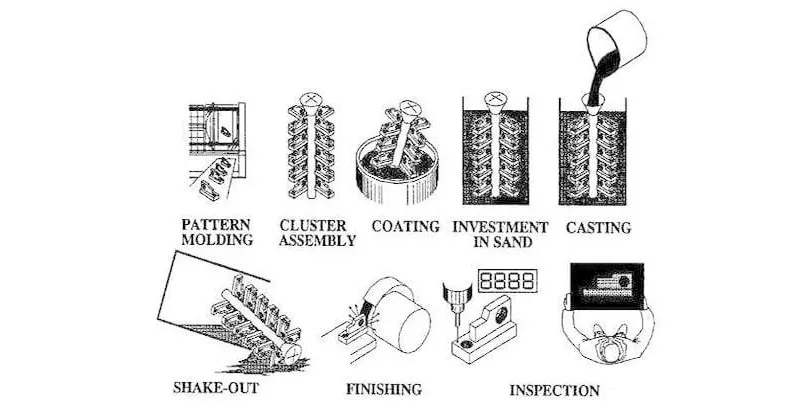
- English
- Español
- Português
- русский
- Français
- 日本語
- Deutsch
- tiếng Việt
- Italiano
- Nederlands
- ภาษาไทย
- Polski
- 한국어
- Svenska
- magyar
- Malay
- বাংলা ভাষার
- Dansk
- Suomi
- हिन्दी
- Pilipino
- Türkçe
- Gaeilge
- العربية
- Indonesia
- Norsk
- تمل
- český
- ελληνικά
- український
- Javanese
- فارسی
- தமிழ்
- తెలుగు
- नेपाली
- Burmese
- български
- ລາວ
- Latine
- Қазақша
- Euskal
- Azərbaycan
- Slovenský jazyk
- Македонски
- Lietuvos
- Eesti Keel
- Română
- Slovenski
- मराठी
- Srpski језик
Lost Foam Casting: A Revolutionary Casting Process
2023-12-29
Casting has been an important manufacturing process for centuries. But over time, industry experts discovered several limitations of traditional casting processes. Lost Foam Casting (LFC) is a newer casting process that helps overcome some of these limitations. In this article, we will explore the Lost Foam Casting process, its benefits, and how it works.

What is Lost Foam Casting?
Lost Foam Casting (LFC) is a type of casting process in which a foam pattern is used to create a metal part. The foam pattern is coated with a refractory material and then embedded in sand. The molten metal is then poured into the mold and the foam pattern evaporates. This process creates a precise shape, with intricate details and minimal finishing.
Benefits of Lost Foam Casting
Lost Foam Casting has several benefits over traditional casting processes. Firstly, the process eliminates the need for cores, which are often required in traditional casting processes. This helps simplify the casting process and reduces waste. Additionally, Lost Foam Casting allows for flexibility in design and precision in shaping, as foam patterns can be easily molded into complex shapes.
Another benefit of Lost Foam Casting is that it produces products with excellent surface quality, eliminating the need for additional finishing and post-processing. This saves time and costs in manufacturing. LFC also results in fewer defects in the castings, as the process is self-insulating and pressure-resistant, reducing the risk of shrinkage and gas porosity.
How Lost Foam Casting Works
The first step in Lost Foam Casting is to create a foam pattern to the desired shape and size. This foam pattern is then coated with a refractory material, such as zirconia or alumina, to create a hard coating that can withstand the heat from the molten metal. Next, the coated foam pattern is embedded in sand and the molten metal is poured into the mold.
As the molten metal is poured onto the foam pattern, it melts the foam, leaving a mold cavity, which takes the shape of the desired part. The molten metal then fills the mold cavity, solidifying and cooling to form the desired metal casting. The refractory coating protects against sand erosion by the molten metal and allows for a clean surface finish on the final product.
Applications of Lost Foam Casting
Lost Foam Casting has been used in a variety of industries, including automotive, aerospace, and art foundries. The process is used to create intricate parts such as gears, engine blocks, and cylinder heads. LFC is also used in art foundries to create bronze sculptures with delicate and detailed features.
In conclusion, Lost Foam Casting is a revolutionary casting process that provides several advantages over traditional casting processes. It eliminates the need for cores, simplifies manufacturing, reduces waste, and produces high-quality products. With its flexibility in design and accuracy in shaping, Lost Foam Casting is becoming an increasingly popular choice for manufacturing intricate and precise metal parts.



